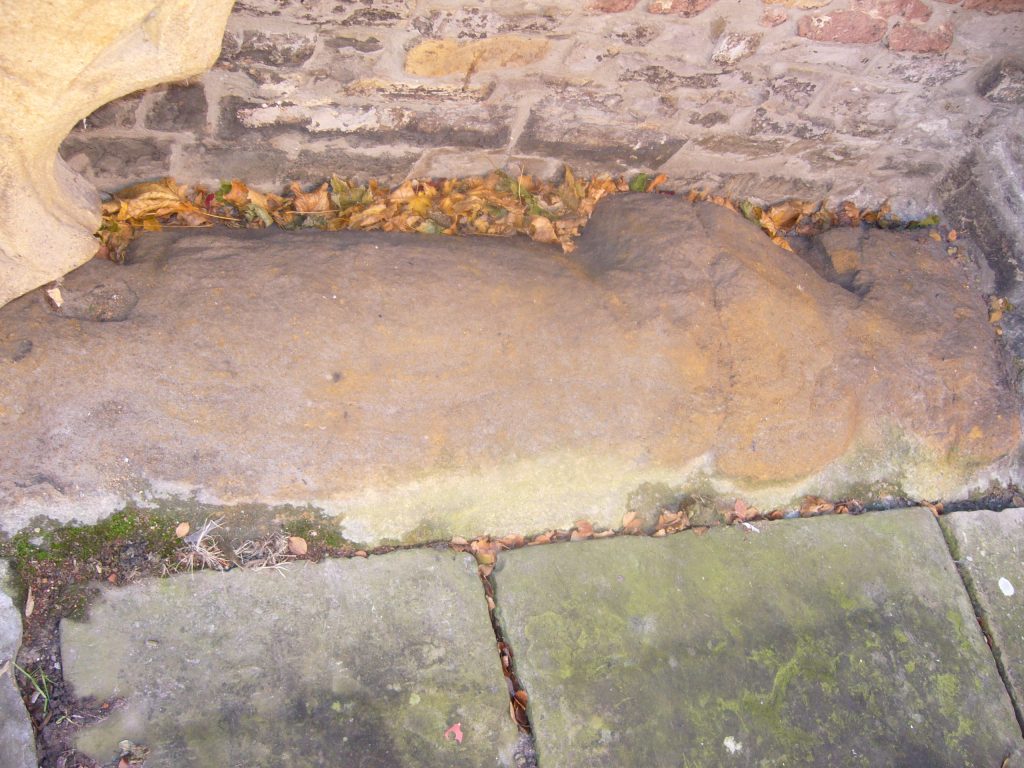Two heavily work effigies can be seen on the external wall of the North Transept of St Mary’s Church. They flank the door that led below to the Charnel House and Crypt.
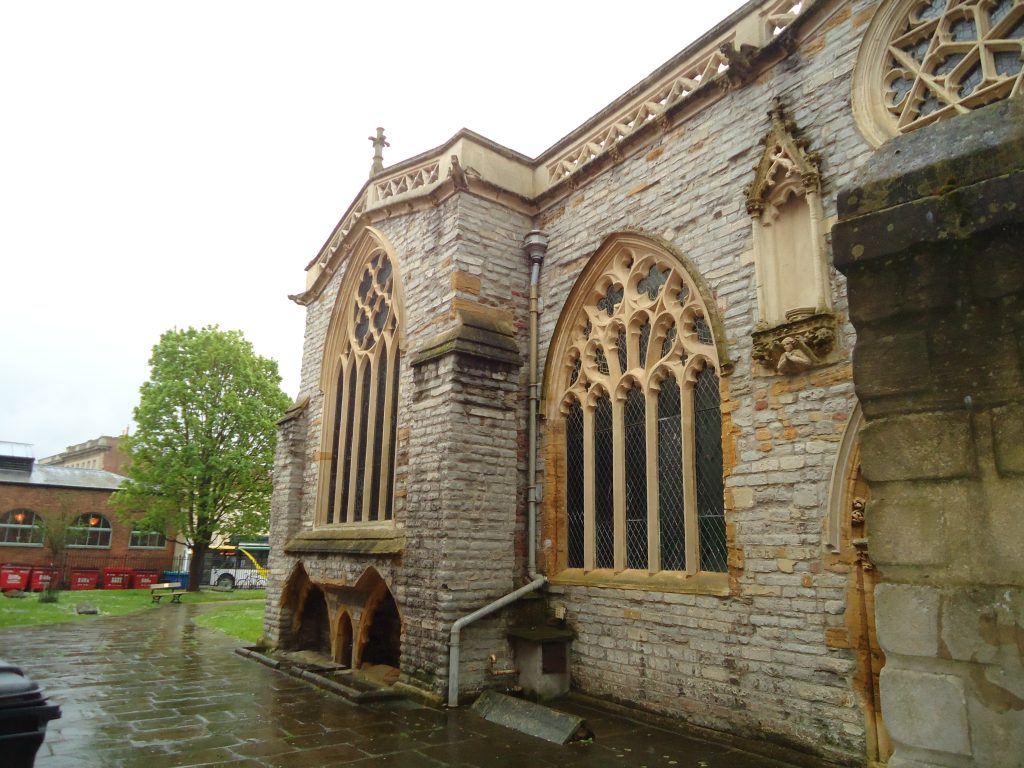
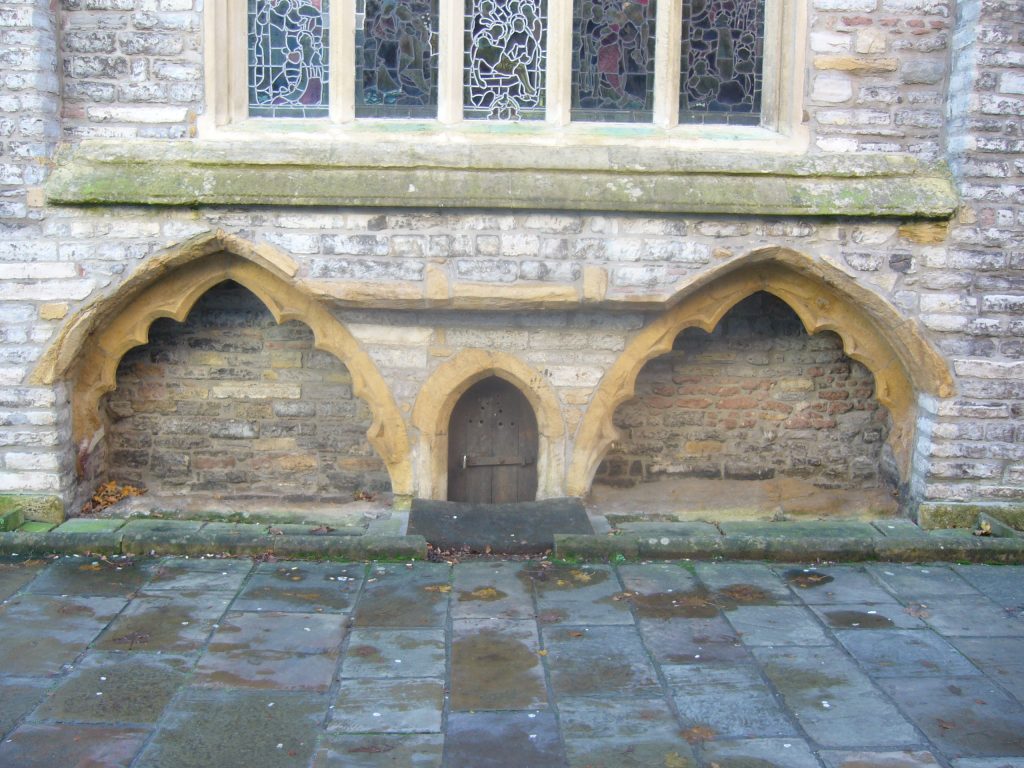
1885 History of Bridgwater
Extract from Jarman’s History of Bridgwater
It should especially be noticed that beneath the window of the north transept are two canopied recesses, each containing a mutilated and now almost shapeless effigy : these recesses are in the wall, and it may therefore be taken for granted they were made when the edifice was built, and represent the founders, or the founder and his lady, as it is scarcely likely, any other personages would be honoured in that manner at the time of the erection
1907 Ancient Borough of Bridgwater
Extract from Greswell’s chapter on St Mary’s Church within Powell’s Ancient Borough of Bridgwater
Still keeping to the exterior of the church, it is evident that all the oldest work is on the north side. The buttresses, the walls, the stonework tell of very early date, mostly of the Early English style. Beneath the north transept is the charnel-house, approached by a door cut in between the two recumbent stone effigies which lie beneath the great north window of this transept. The history of these effigies is entirely lost. Neglect by past generations has permitted them to be utterly defaced, and they are now unrecognizable. They date most likely from the thirteenth or fourteenth century. It is by no means improbable that they were erected to the memory of William Briwere and his wife, or possibly to his son and his son’s wife. From their position they point clearly to being placed where they are in order to commemorate some great benefactors to the church.
1917 Monumental Effigies in Somerset
Notes by Alfred C. Fryer ‘Monumental Effigies in Somerset’ in PSANHS LXIII, 1917
BRIDGWATER (St. Mary).
No. 1 PERSON REPRESENTED. Unknown person.

EFFIGY (5ft. 9ins.). This effigy, made of Ham Hill stone, is under a cinquefoil-headed recess outside the church in north wall. It is seriously mutilated and weather-worn, and probably of fourteenth century date.
REFERENCES. Sketch in Braikenridge’s illustrated Collinson, part 1, p. 87 (dated 1843) ; Powell’s Bridgwater, 1, 110 ; Wade’s Somerset, 64.
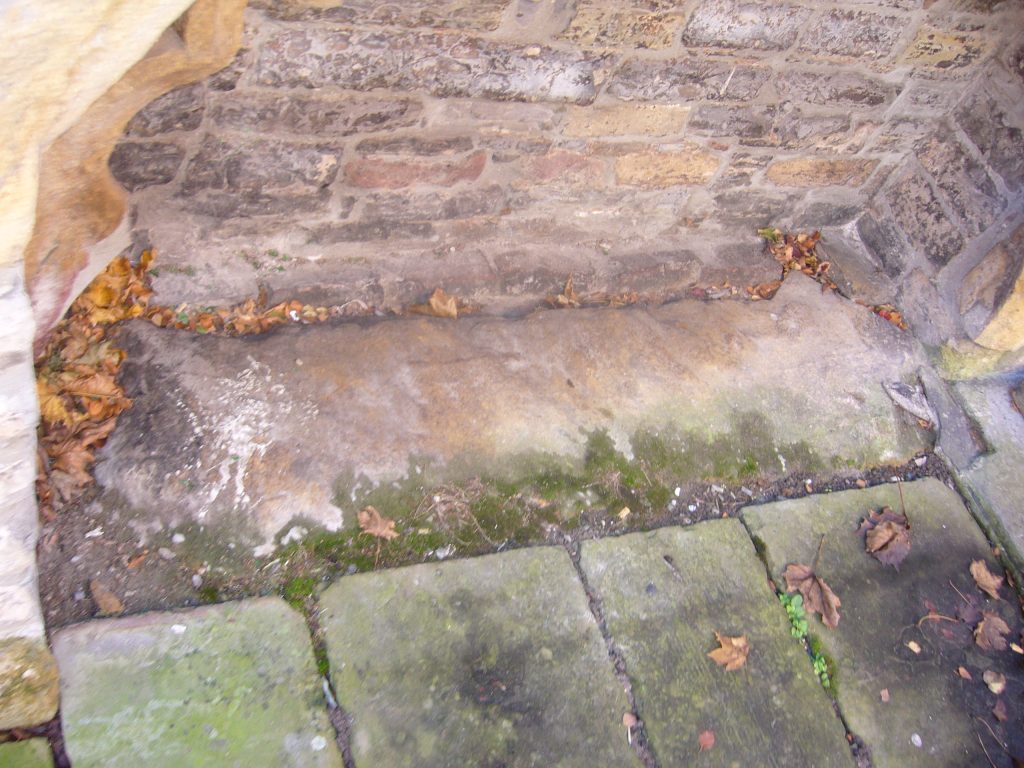
No. 2 PERSON REPRESENTED. Unknown civilian (?).
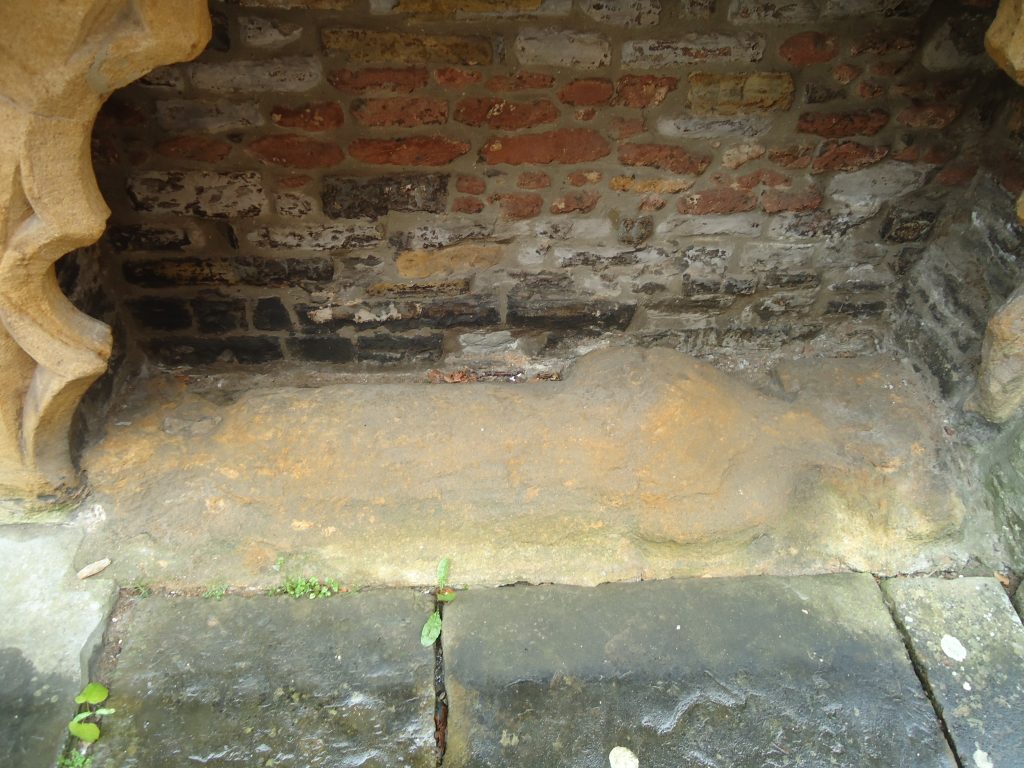
EFFIGY (5ft. 9ins.) mutilated, but probably a fourteenth century civilian in hosen and cote, hands raised in prayer, head on bolster (lft. 10ins. by 1ft. 1in. by 3ins.) and animal (mutilated) at feet. Made of Ham Hill stone.
REFERENCES. See above, No. 1 Effigy.
